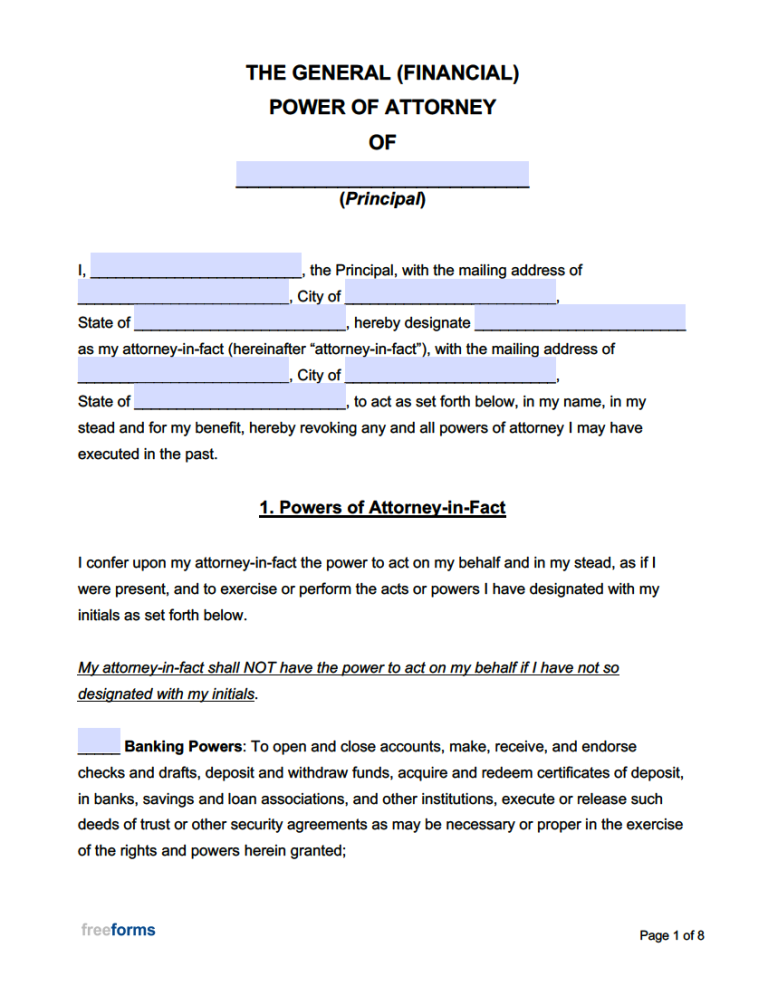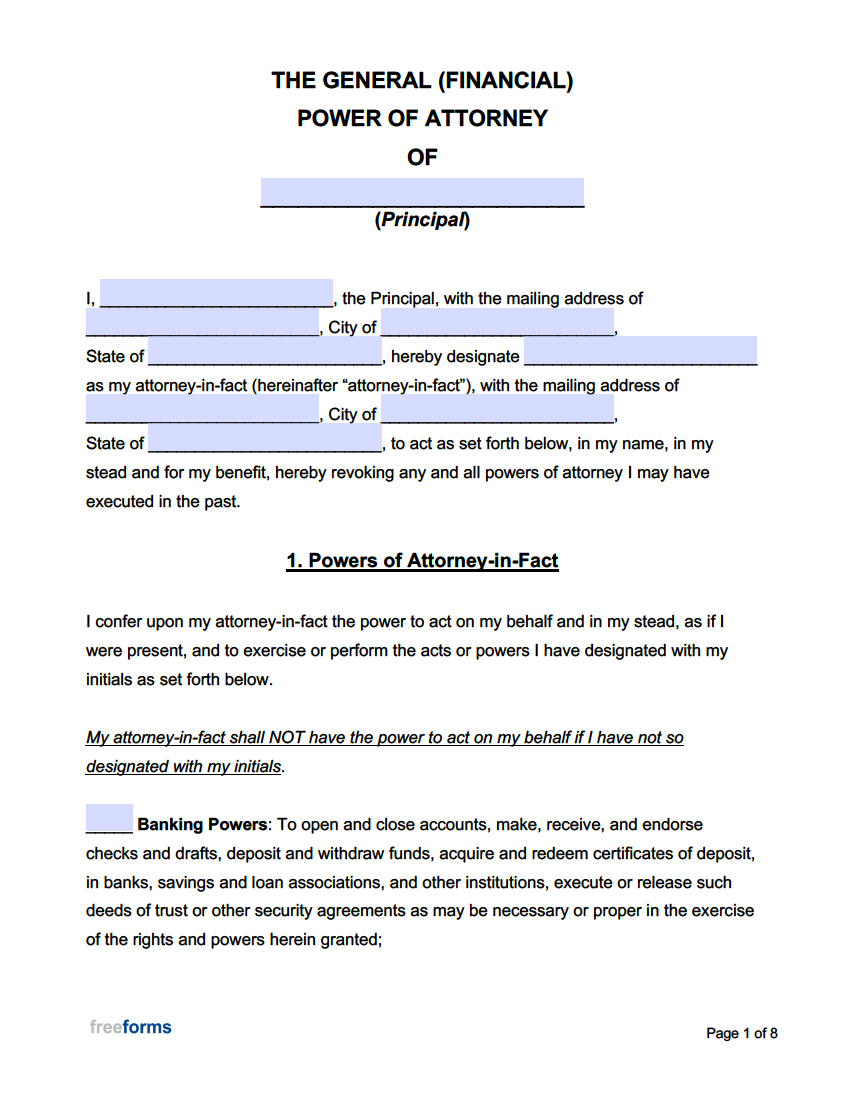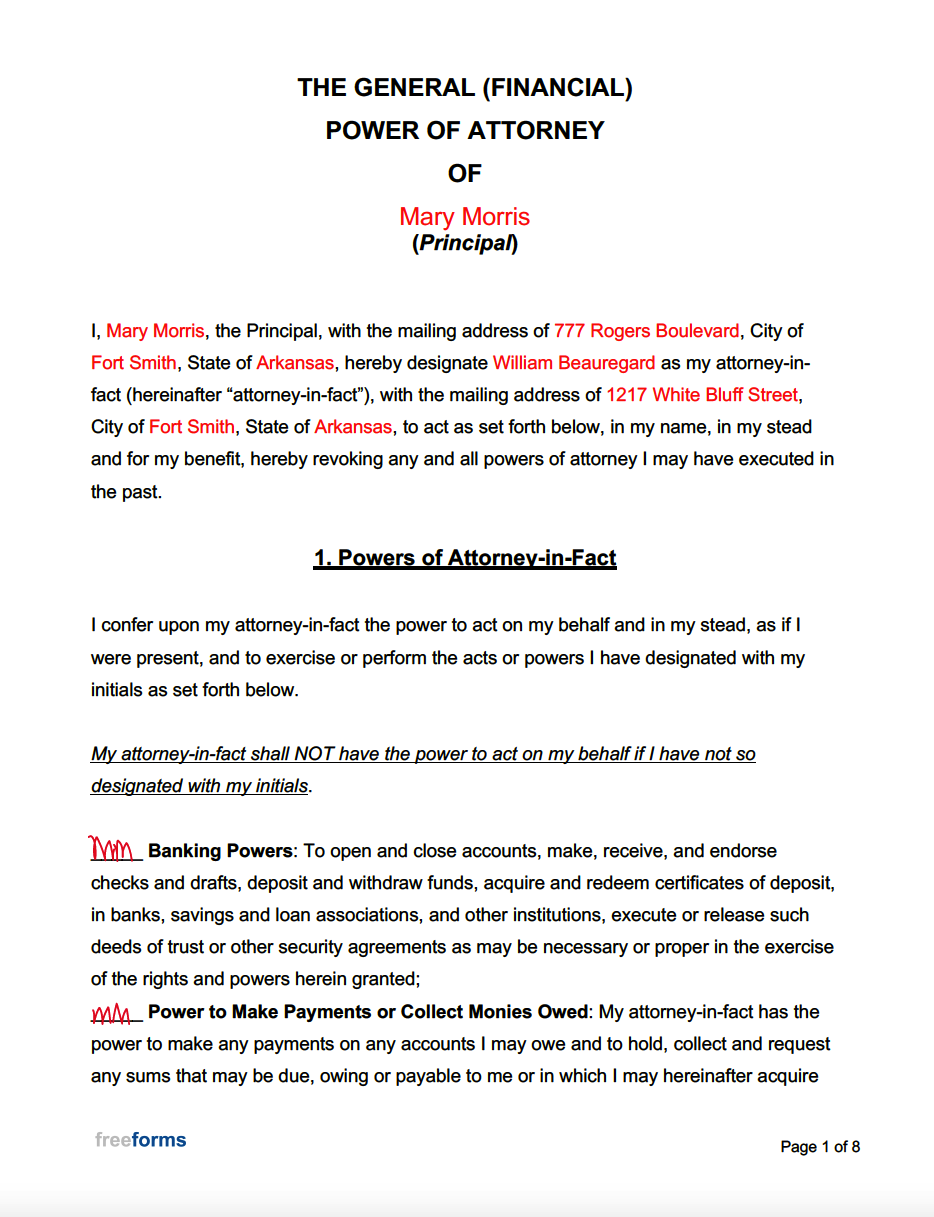By State
- Alabama
- Alaska
- Arizona
- Arkansas
- California
- Colorado
- Connecticut
- Delaware
- Florida
- Georgia
- Hawaii
- Idaho
- Illinois
- Indiana
- Iowa
- Kansas
- Kentucky
- Louisiana
- Maine
- Maryland
- Massachusetts
- Michigan
- Minnesota
- Mississippi
- Missouri
- Montana
- Nebraska
- Nevada
- New Hampshire
- New Jersey
- New Mexico
- New York
- North Carolina
- North Dakota
- Ohio
- Oklahoma
- Oregon
- Pennsylvania
- Rhode Island
- South Carolina
- South Dakota
- Tennessee
- Texas
- Utah
- Vermont
- Virginia
- Washington
- West Virginia
- Wisconsin
- Wyoming
What Is a General Power of Attorney?
A general power of attorney is a document that can transfer concurrent financial authority to a designated individual. In other words, if somebody wishes to have a representative act on their behalf for matters related to their banking, property, benefits, and so on, they may appoint them using this written instrument.
Once an agent has been appointed, they will be able to function as the principal and perform any measures needed to accomplish the delegated tasks (sign documents, receive paperwork, make payments, etc.). What separates this contract from a durable POA is the fact that it ceases to continue once the principal becomes unfit to make their own decisions, i.e., incapacitated.
How to Create a General Power of Attorney
If you wish to provide another individual with general power of attorney for financial matters, look to the steps below to better understand the process.
Step 1 – Obtain a Form
When selecting a form to use, you should first consider some of the factors needed to create a viable document, such as:
- State Laws – Ensure that the form you choose meets all the state requirements needed for a legally binding document. The form contained on this page is designed to correspond with most areas of the country, but there is also a state-by-state section where you can see designated forms for the exact region in which you reside.
- Powers – Does the form possess all the powers that you wish to deliver to your attorney-in-fact? Peruse the document to confirm that it has all the desired wording you necessitate.
Step 2 – Select an Agent
The next step requires you to choose an attorney-in-fact that you feel will uphold their duty as a responsible agent. People will most commonly elect a:
- Spouse
- Family Member
- Close Friend
- Business Associate (depending on the circumstances)
Step 3 – Customize the Document
This is the most important step in terms of how the principal-agent relationship will be carried out. Here, you will establish:
- The Parties – The names and addresses of the grantor and their attorney-in-fact.
- Authority – The executor will have to indicate which powers they want to provide to their agent by initialing each one.
- Effective Date – The day on which the arrangement will commence (immediately or on a later date).
- Termination Date – A day on which the contract will expire (if any).
Step 4 – Sign
The principal party is required to supply the form with their endorsement in order to validate it. Most states will request that the signing occurs in the presence of a notarial officer and/or while being observed by witnesses. Some states will additionally require the attorney-in-fact to sign as well. (Check your state’s law to insure that all signatures are valid.)
Step 5 – Make Copies
Now that you have officially created a general power of attorney, it is important for you to furnish copies to your agent and any other applicable parties. It is also suggested that the principal preserve the original document for their own records.
Sample General Power of Attorney
Download: Adobe PDF, MS Word (.docx)




